Pad Thai – Thai-Style Stir-Fried Noodles
A Recipe of Kasma Loha-unchit
Recipe Copyright © 2000 Kasma Loha-unchit.
Recipe Copyright © 2000 Kasma Loha-unchit.
See Also: Our blog entries, Pad Thai, and Pad Thai at Aw Taw Kaw Market
Ingredients
- 1/2 lb. dried thin gkuay dtiow or rice noodles (also known as ban pho to the Vietnamese)
- 3 Tbs. fish sauce (nahm bplah), to taste
- 3 or more Tbs. tamarind juice the thickness of fruit concentrate, to taste
- 2 Tbs. palm or coconut sugar, to taste
- 4 Tbs. peanut oil
- 1/3 lb. fresh shrimp, shelled, deveined and butterflied
- 3/4 cup firm pressed tofu, cut into thin strips about an inch long, half an inch wide and a quarter inch thick
- 4-5 cloves garlic, finely chopped
- 3 shallots, thinly sliced (or substitute with half a medium onion)
- 1/4 cup small dried shrimp
- 1/4 cup chopped sweetened salted radish
- 2-3 tsp. ground dried red chillies, to desired hotness
- 3 eggs
- 3 cups fresh bean sprouts
- 1 cup garlic chives, cut into 1 1/2-inch-long segments (optional)
Garnish
- 2/3 cup chopped unsalted roasted peanuts
- 1 lime, cut into small wedges
- A few short cilantro sprigs
- 4 green onions - trim off root tip and half of green leaves and place in a glass with white end in cold water to crisp (optional)
Soak the dried rice noodles in cool or lukewarm tap water for 40 minutes to one hour, or until the noodles are limp but still firm to the touch. While the noodles are soaking, mix the fish sauce with the tamarind juice and palm sugar; stir well to melt the sugar. Taste and adjust flavors to the desired combination of salty, sour and sweet. Prepare the remaining ingredients as instructed.
When the noodles have softened, drain and set aside. Heat a wok over high heat until it is smoking hot. (Note: If your wok is small, do the stir-frying in two batches. The recipe may also be halved to serve two.) Add 2 teaspoons of oil and quickly stir-fry the shrimp until they turn pink and are almost cooked through. Salt lightly with a sprinkling of fish sauce and remove them from the wok.
Swirl in the remaining oil, save for 1 teaspoon, to coat the wok surface and wait 20 to 30 seconds for it to heat. Add the tofu, frying 1 to 2 minutes, or until the pieces turn golden. Add garlic and stir-fry with the tofu for 15 to 20 seconds. Follow with the sliced shallots and cook another 15 seconds. Then add the dried shrimp, sweetened salted radish and ground dried chillies. Stir and heat through a few seconds.
Add the noodles and toss well with the ingredients in the wok. Stir-fry 1 to 2 minutes and when most of the noodles has changed texture and softened, push the mass up along one side of the wok. Add the teaspoon of oil to the cleared area, crack the eggs onto it and scramble lightly. When the eggs have set, cut into small chunks with the spatula and toss them in with the noodles.
Add the sweet-and-sour seasoning mixture. Stir well to evenly coat noodles. If the noodles are still too firm to your liking, sprinkle 1 to 2 tablespoons of water over them to help cook. Taste and adjust flavors as needed to your liking by adding more fish sauce or tamarind juice; if the noodles are not sweet enough, sprinkle in a small amount of granulated sugar.
When the noodles are cooked to your liking, toss in 2 of the 3 cups of bean sprouts and the garlic chives (if using). Sprinkle with half the chopped peanuts and return the shrimp to the wok. Stir and when the vegetables are partially wilted, transfer to a serving platter, or dish onto individual serving-size plates, and garnish with the remaining bean sprouts and chopped peanuts, the lime wedges, cilantro and green onions.
Serves 4 as a one-dish lunch. Squeeze lime juice over each portion before eating.
Notes and Pointers
I don't really know how Pad Thai became the most famous of Thai foods in America. To me, it is but one of many quick fast foods, with the best served by noodle carts, inexpensive sidewalk eateries, and small, nondescript mom-and-pop noodle shops, rather than fine restaurants, in the cities and towns of Thailand. I always find it amusing when restaurant reviewers judge the quality of a Thai restaurant by the quality of its Pad Thai, as noodles can hardly take claim as lying at the heart of my country's cuisine.
In fact, its name literally means "Thai-style stir-fried noodles," and for a dish to be so named in its own country clearly suggests an origin that isn't Thai. Indeed, noodle cookery in most Southeast Asian countries was introduced by the wave of immigrants from southern China settling in the region the past century. They brought with them rice noodles and their ways of cooking them. During the recession following World War II, the post-war government of Field Marshall Pibul, desperate in its efforts to revive the Thai economy, looked for ways to stem the massive tide of unemployment. Among the occupations the government aggressively promoted to give the populace a way to earn a living was the production of rice noodles and the operation of noodle shops. Detailed instructions on how to make the noodles and recipes were printed and distributed all around the country. From these efforts, rice noodles became firmly rooted in the country and have since become a widespread staple food.
The ethnic Chinese had good business sense, survival skills and entrepreneurial spirit. Seeing how the Thai people were very fond of the combination of hot, sour, sweet and salty flavors, they added these to their stir-fried noodle dishes and gave it a fusion name, much like Western chefs today are naming their dishes Thai this or Thai that on their East-West menus.
Back home, there are as many ways to make Pad Thai as there are cooks, geographical regions, moods, and creative entrepreneurial spirit. The following is a basic traditional Pad Thai recipe (if "traditional" is a word that can be applied to a fusion dish invented in relatively modern times), combining the hot, sour, sweet and salty flavors so characteristic of Thai cuisine. Variations can be made by changing the sources of these four flavors and adding personal touches to make each combination unique.
For instance, instead of tamarind and palm sugar, vinegar and granulated sugar may be used; and instead of fish sauce, light or thin soy sauce may take its place. Some noodle stalls in Thailand use a sweetened black soy sauce in combination with sugar, and ground dried chillies made with darkly roasted whole dried chillies, producing Pad Thai with a very different color and flavor balance than what Americans have become accustomed to. More refined eateries focus on presentation, wrapping the cooked noodles inside egg like an omelette.
Many American Thai restaurants use tomato ketchup, yielding reddish noodles coated with a thick gooey sauce, which has a flavor and color appealing to the American palate. Other restaurants use Sriracha bottled chilli sauce instead of ground dried chillies, resulting also in reddish noodles. This recipe yields noodles that are firm and chewy with the strands dry and separate (the way I like it), but if you prefer the soft and mushy texture of some restaurant noodles, precook the noodles in boiling water before stir-frying.







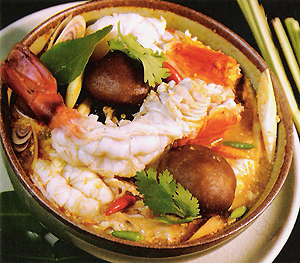

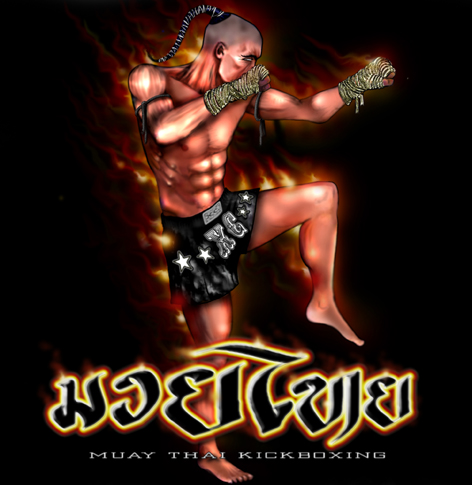
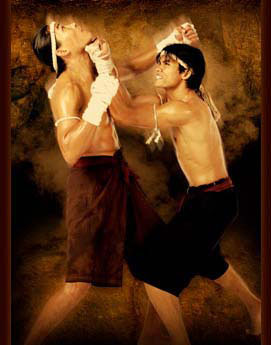 Muay Thai Punch Techniques
Muay Thai Punch Techniques  Muay Thai Elbow Techniques
Muay Thai Elbow Techniques Muay Thai Knee Techniques
Muay Thai Knee Techniques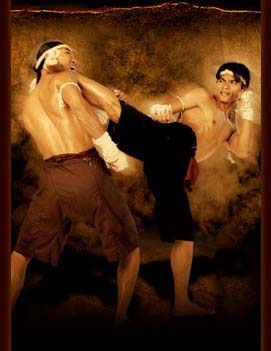 Muay Thai Kick Techniques
Muay Thai Kick Techniques 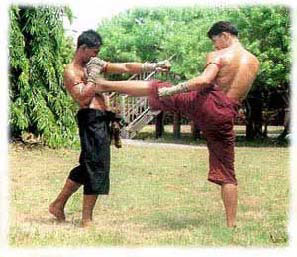
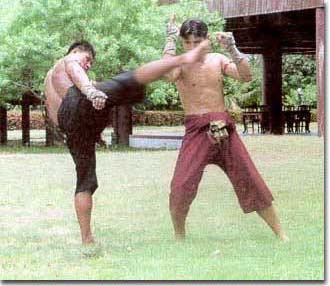
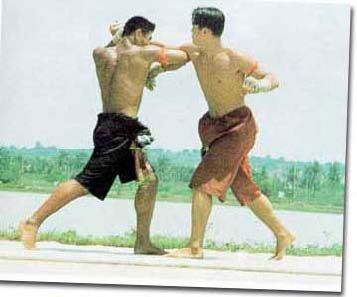









 If you've got just one day and you need some simple relaxation, don't worry; there are lots of places to go for some recreation.
If you've got just one day and you need some simple relaxation, don't worry; there are lots of places to go for some recreation. For tourists, the main centers for evening entertainment are concentrated around Silom Road (
For tourists, the main centers for evening entertainment are concentrated around Silom Road (


